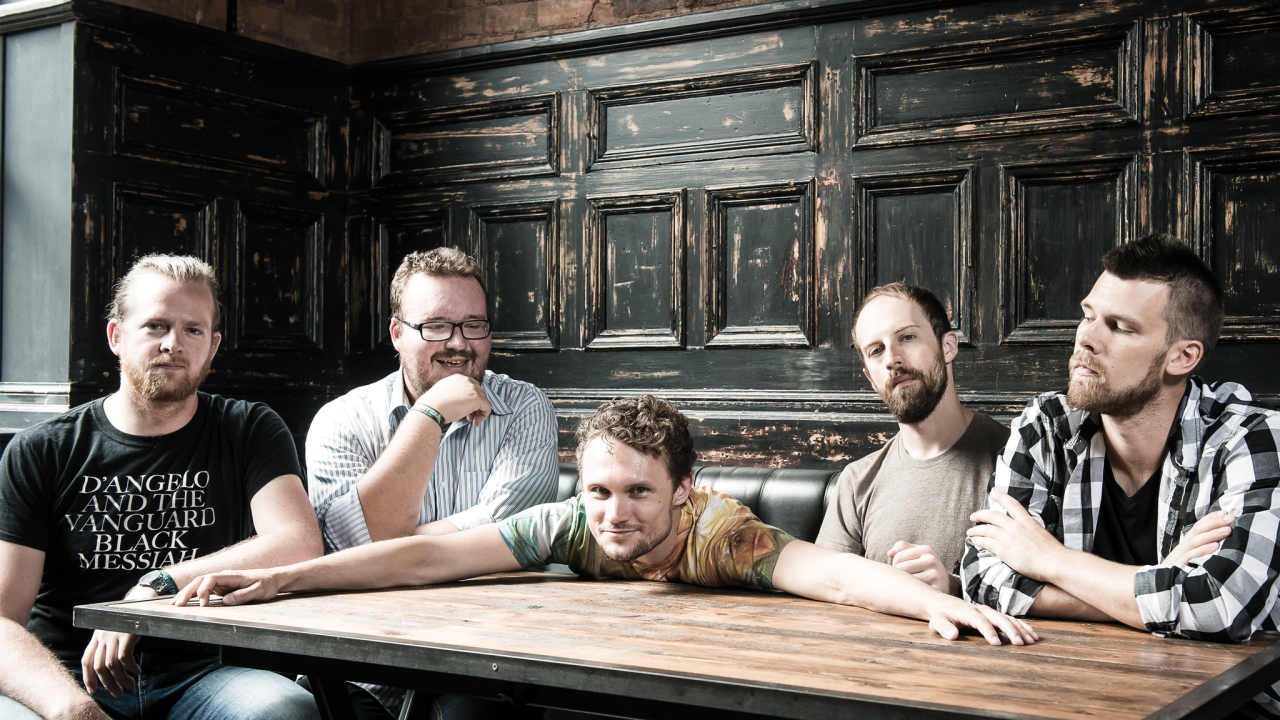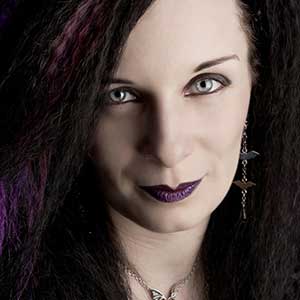“When I was younger, I was in bands with great names but they never did anything… so when we started this one, I picked a name that was really convoluted and this is the project that has stuck around for the longest.”
Diatessaron’s Darren Young is in quite the reflective mood as he chats over the phone from his home in the Canadian city of Calgary. It is here that four-fifths of the band are based – in case you’re wondering, their band name is Greek for the musical harmonic term the ‘perfect fourth’ and was so chosen not just because of what Young calls their “harmonic attention” but also because there used to only be four of them.
Theirs is a fairly typical tale of a young band trying to make it big. The core members have known each other since high school and after dabbling with local bands, they decided to make music together, with additional input from Young’s University of Calgary classmate Erik Smistad. They wrote, they gigged and a couple of years later, they released their first two EPs, 2010’s Sky Blue and the conceptual Monument. But instead of pushing forward, that’s exactly when they decided instead to put things on ice. “I had moved to Toronto for a couple of years for my Masters in Music Performance,” explains Young. “We didn’t call it a day or anything, we just decided we would play sparingly when I was in town.”
A handful of shows and the release of a third EP, 2013’s Cobalt 60 Blue, sent the message that Diatessaron certainly weren’t dead yet but were simply dreaming up new musical harmonies. “During that period was when a lot of the writing was happening for Sunshine,” says Young.
In fact, it’s taken the group (Young, bassist Smistad, vocalist Simon TJ, guitarist Carl Janzen and drummer Stephan Bots) the best part of two years to craft their first album. During those years, they’ve even previewed early versions of the Sunshine trilogy in their live sets. Fans casting an eye over the album’s 11 tracks might spot a few more familiar song titles as well. The Place Where The Sun Never Sets and the title track from their Sky Blue EP have both been revamped, along with a brand new, full-band version of the gut-wrenchingly powerful ballad Deexister taken from frontman Simon ‘TJ’ Tumasz-Jordan’s solo album Each Sparrow.
“We felt that our earlier material didn’t fully represent what we could accomplish in the studio, but this time we really took our time and crafted it and made sure it sounded the way we wanted it to,” says Young of these older tracks. “I think it was probably my idea to do Deexister as a full-band project because I just love Simon’s solo album so much. I think our version is actually even more powerful than the original because we’re able to do so much more than just piano and voice.”
Many of the songs that I’ve written have been when I was dealing with certain relationship issues…
If the song titles didn’t already give away a few clues, there is a predominant theme of recovering after great loss throughout the band’s work. Young explains on the subject: “In the track Sky Blue, you’ve got a character who’s experiencing some psychological trauma due to the loss of a loved one and that person has trapped the memory of that person in their own mind as an other and can’t reconcile themselves with the fact this person has gone. The Sunshine trilogy is very much like that as well – my own experiences of loss caused me to write that trilogy and it started off as something that was very ‘woe is me’ and ‘this is my song of suffering’ but by the end, it reaches this very optimistic point where I say what’s done is done and it’s time to move forward.
“Many of the songs that I’ve written through the course of this band have been when I was dealing with certain relationship issues and personal things,” he adds cautiously. “It’s a recurring theme in my music to be referencing things that are out of this world, whether it’s beyond the atmosphere, sun and planets, and Simon actually does the same thing, maybe even to a larger extent than I do. His songs quite frequently reference the ethereal, the afterlife, space… I feel that our two styles combine quite well in that aspect.”
These overarching themes of sorrow and optimism are contrasted with the accompanying music which manages to be spacious yet dense, punchy yet soothing, and shrouded with melancholy that’s illuminated by uplifting harmonies. These opposites are further reflected through the album’s artwork, which shows a depressed man surrounded by clowns. The dichotomy was intentional, although it was pure coincidence that the album release date falls on September 11, a day when life changed for a great many people in North America and beyond.
Musically, Diatessaron come across as a quietly confident band who take their craft seriously, with audible influences coming from fellow Canadians Rush, as well as Mars Volta and Coheed And Cambria. “Our bassist Erik is a huge fan of Rush – they’re one of his favourite bands – and Simon’s voice is obviously inescapable,” muses Young. “I’ve been listening to Rush for a long time too but when I started writing music, I hadn’t heard of them. My guitar teacher at the time said to me, ‘Hey, have you heard this band? Because I think you write songs almost exactly like them.’ Even though when I started writing I was listening to a lot of pop punk and the more metal-ish/emo-core/screamo sort of stuff… these are still bands that are able to create longer songs that aren’t necessarily just verse, chorus.”
To prove their diversity as musicians, each band member is involved in at least one other side project. Simon TJ has an electronic outing called Hello Moth, Young plays double bass for post-rockers Jung People while Carl Janzen, Erik Smistad and Stephan Bots all play with Rockwall Highline. Young and Smistad also play with the Radiohead-esque The Northwest Passage, which might also explain why Diatessaron’s debut took so long to record.
Such diversity didn’t always work in their favour though. “We were never accepted by the indie scene,” Young says of their early attempts to gain recognition. “In Calgary, we’ve always had a bit of a hard time gaining attention, but then I noticed when we sent things to Europe or the UK, we would get attention, so that was my deciding factor in attempting to tour overseas. Locally, it might just be because there isn’t the market here, but I also think it was due to us having these recordings that didn’t live up to the expectations of local promoters. I do know that from our perspective it was just very difficult for us to find a following here.”
Were they ever tempted to relocate to a bigger city, like Toronto? “Not really,” he says, “because a lot of us have really strong ties here and at the same time, moving to a city like Toronto doesn’t give you any more guarantees of getting noticed. In fact, you’re probably more marginalised at that point.”
Although their EPs got Diatessaron noticed in prog circles, they aren’t planning on simply basking in the rays of Sunshine. This self-financed five-piece have just played the UK’s Bloodstock Festival and now have their sights set on more live shows – drummer Stephan Bots relocated to Germany last year to work with sound design experts Ableton, which makes more European gigs a distinct possibility. Meanwhile, Young is already playing around with ideas for their second album. “I don’t want to spoil too much,” he says, “but I do feel our next album will go in the direction of something more and less progressive at the same time. There will be an overarching concept but the songs will be quite short, but still technical.”
They may have spent the last few years grappling with darkness but Diatessaron have finally stepped into the light. _ Sunshine is available through Bandcamp and iTunes. Visit www.diatessaronband.com for more information._
The Perfect Four!
Diatessaron’s releases so far…
Sky Blue (2010) Although not as polished as their more recent works, the bold harmonies and irregular time signatures are a promise of things to come on Diatessaron’s perky debut EP. Definitely the most pop punk-influenced of all their releases, it’s clear the band are still experimenting with their sound here.
Monument (2010) What a difference a few months makes! Written as a five-part rock symphony, this conceptual EP carries a more complex sound, with plenty of classic prog reference points. More challenging and satisfying than their debut, it’s dedicated to the victims of the Hiroshima and Nagasaki atomic bombings and concludes with the 12-minute Senbazuru.
Cobalt 60 Blue (2013) After an interlude, the five-piece return with an EP that builds on the classic prog influences of Monument. Diatessaron revise their earlier pop hooks, complementing them with more cerebral sounds and a heavy dose of 70s-era Rush.
Sunshine (2015) The album that brings all the elements of Diatessaron’s radiant triptych together. Intelligent and emotional, Sunshine is illuminated by Rush-inspired melodies, a generous pinch of Genesis and a modest helping of Coheed And Cambria.

